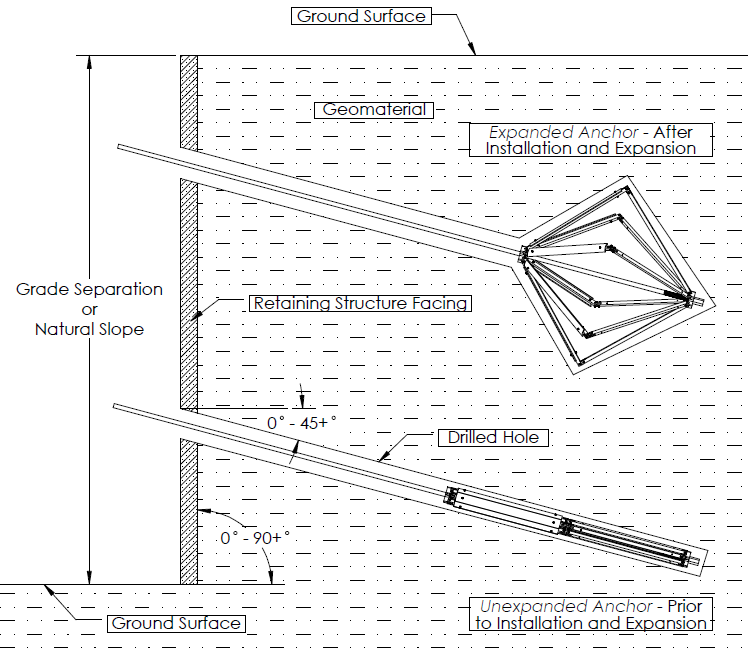Innovators at Georgia Tech have developed a root-inspired ground anchor or deep foundation element that expands in the ground during installation to increase capacity. The critical shear surface geometry of the expanded anchor is log-spiral in shape. Compared to the cylindrical critical shear surface geometry of a linear ground anchor, this change in geometry increases the surface area over which the shear strength of the surrounding geomaterial is mobilized to increase anchor capacity.
The ground anchor consists of a stressing element (steel bar or strands), an expansion mechanism, and cement-based backfill. Inspired by plant root systems, which have high axial tensile capacity relative to their biomass, the device employs the same geometric structure and stress arching principles. Once installed, the root-inspired ground anchor can resist static or dynamic mechanical loads—either axial tensile, axial compressive, moment, or torsional—resulting from any use in a terrestrial or extraterrestrial capacity.
- Improved performance: Provides higher capacity with shorter installation length, as compared with linear ground anchors or foundations piles
- Robust: Increases resistance to mechanical shearing in the soil around the anchor
- Increased stability: Resists axial, torsional, and moment loads
- Earth retention
- Deep foundations for constructed structures
- Device anchoring (e.g., wind energy, electric transmission or cellular towers)
- Structural engineering
In the field of geotechnical engineering, retaining structures are used to reinforce naturally occurring earthen slopes or human excavations into the earth, which lead to grade separations that may not remain stable without mechanical reinforcement. These slopes and excavations are typically composed of geomaterials, which are conglomerate masses of soil and rock. Retaining structures apply equilibrating forces to a mass of geomaterial to maintain the stability of that mass. A component of many retaining structures, ground anchors transfer the equilibrating forces applied to an unstable mass of geomaterial to a stable mass of geomaterial elsewhere in the system.
Deep foundations are used to support the mechanical loads of structures (buildings, entertainment arenas, bridges, energy structures, communications towers, etc.) using the shear strength of the underlying geomaterials. Deep foundations are typically installed in straight-shafted drilled holes and transfer loads to the surrounding geomaterial. Deep foundations typically transfer compressive (downward) loads to the native geomaterial through shear along the length of the deep foundation shaft and at the base of the foundation through end bearing. Deep foundations can also transfer tensile (uplift) forces along the length of the foundation shaft to the native geomaterial.

Ground anchor system overview of vertical applications

Ground anchor system overview of horizontal applications
